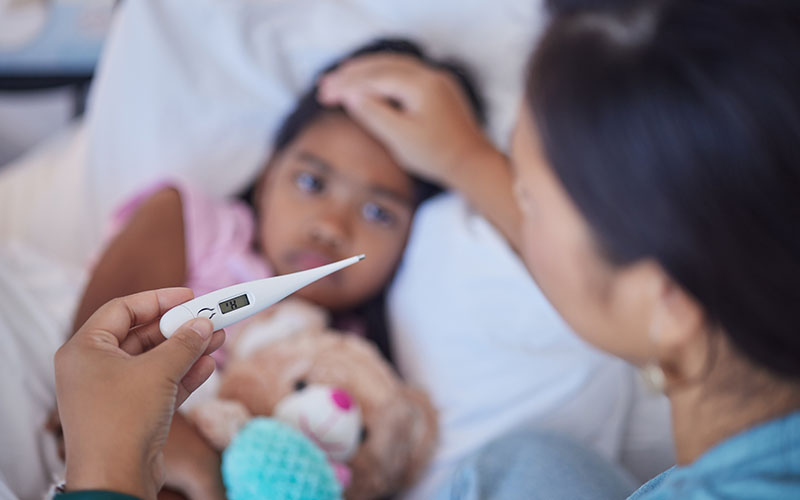
Following nationwide reporting from hospitals, leaders from the Centers for Disease Control, or CDC, are warning of higher than normal respiratory infections and an earlier than normal flu season, with more flu hospitalizations for this time of year than we’ve seen in 10 years. In addition to common colds, there are three respiratory illnesses of concern currently swirling about: respiratory syncytial virus or RSV—a seasonal illness which is the most typical cause of bronchitis and pneumonia in young children, plus flu and COVID. This year, after a recent increase in RSV cases, flu is now on the rise and putting healthcare providers and parents on alert.
These respiratory illnesses have similar symptoms
It’s hard to tell the difference between influenza, COVID-19 and other respiratory viruses just by looking at symptoms alone which are usually runny nose, sore throat, cough, sneezing and fever. Flu can also result in more severe symptoms like body aches, vomiting, and high fever of 103 or more. COVID may or may not result in loss of taste or smell.
Testing is the best way to tell the difference and get the right treatment if needed
Young children, older adults, pregnant people and people with certain underlying chronic conditions like asthma are most vulnerable to the risk of severe illness from respiratory infections. Antiviral drugs can treat flu and COVID infections for vulnerable adults and children. The antivirals work best when started early in the infection, so it’s important to seek prompt medical attention for testing and to begin early treatment for those who are most vulnerable.
Emergency warning signs of severe respiratory illness
If your child or loved one is experiencing any of the following warning signs, you should seek medical attention right away:
- Fast breathing or trouble breathing
- Flaring of nostrils or straining of the chest or stomach while breathing
- Blue lips, face or fingertips
- Trouble eating, drinking, or swallowing
- Chest pain, muscle pain—a child may refuse to walk or cry excessively if they are lifted up to be held
- Wheezing
- Dehydration shown by no urine over an eight-hour period, a dry mouth or crying without tears
- Not alert or interactive when awake
How to protect yourself and loved ones from severe respiratory illness
- Stay up to date on your vaccinations. Vaccines for COVID and flu are safe, effective and can lower the risk of illness and protect against severe complications.
- Cover your coughs and sneezes with your arm.
- Stay away from people who are ill.
- Wash hands often or use alcohol-based hand sanitizer.
- Consider wearing a well-fitting mask as an added precaution.


My husband has been sick for about 3 weeks. Respiratory problems. No health insurance. 61 years old. Where can he get help?
Great question, Valerie! Check out our article on How to Get Care When You Need It – it includes some great resources for those without insurance. Thank you for reaching out! We’re always happy to help.